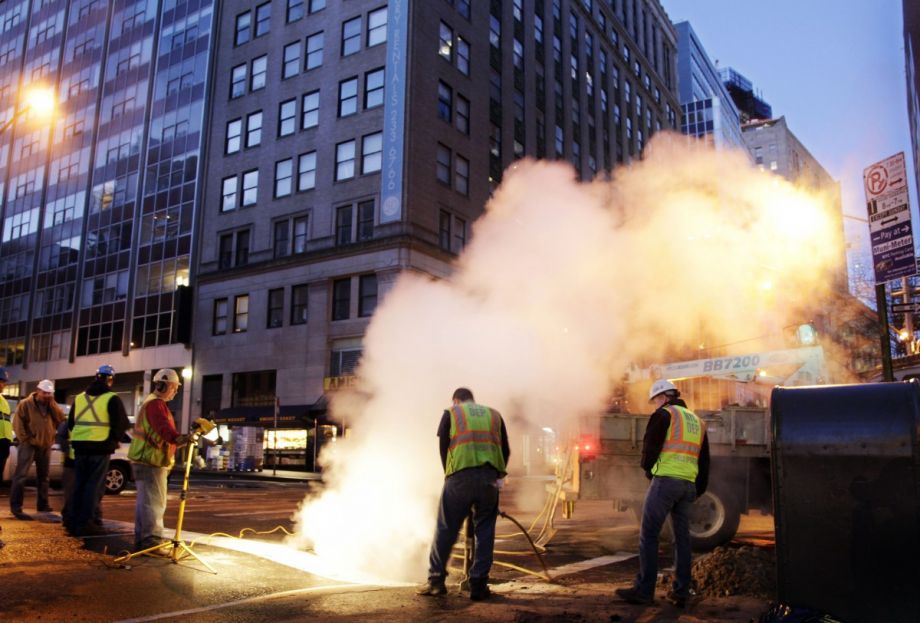If Scott Stringer has his way, New York will soon be the nation’s largest municipal player in the burgeoning green bond market. On Wednesday, Stringer, the city comptroller, proposed a new program for issuing municipal bonds specifically dedicated to financing climate-friendly projects. Announced during UN Climate Week, Stringer’s proposal came a few days after Mayor Bill de Blasio unveiled a plan to cut the city’s greenhouse gas emissions by 80 percent by 2050.
Internationally, interest has grown in green bonds as cities like New York embark on record numbers of big-ticket infrastructure projects aimed at boosting resilience to climate change.
In New York alone, the tab on the planned projects will exceed $27 billion over the coming years. In 2014, worldwide green bonds issuance is expected to nearly quadruple last year’s total, and in another Climate Week announcement, several major investment banks such as Zurich, Barclays and Aviva made promises to invest in the bonds and help strengthen the market.
New York isn’t the first city to see opportunity in green bonds. In July, the District of Columbia Water and Sewer Authority issued a $350 million, 100-year certified green bond. The $2.6 billion project will all but rid the city of combined sewer overflows, or treat wastewater from multiple pipes and tunnels that would have otherwise flowed altogether into the city’s rivers. Investors placed orders for about $1.1 billion worth of bonds, with about $100 million coming from those specifically focused on green bonds, the Wall Street Journal reported. George Hawkins, general manager of the water authority, told the Journal that the robust reception from Wall Street was unusual; the green bond “brought more investors to the table” than a regular bond might have.
D.C. Water and Sewer CFO Mark Kim believes that green bonds could be great for other utilities. D.C. Water and Sewer will certainly be issuing more. “Our intent is to finance all remaining capital expenditures for the Clean Rivers Project with a green bond,” Kim says.
Green bonds have been slow to catch on. The World Bank sold the first green bonds in 2008 as part of its efforts to encourage climate change adaptation and mitigation, but the bonds didn’t pick up steam in America until 2013. Experts say total bond issuance is on track to reach $40 billion by year’s end, a pool of money that will in large part go to strengthening infrastructure, including water systems, electrical grids and transportation networks.
What green bonds bring to the table is a not a new order, but rather a new label for reaching investors interested in climate-friendly projects. Matt Fabian, a managing director of Municipal Market Advisors, points out the processes for a muni green bond and any other muni bond are identical.
“A lot of [municipal bonds] are already green,” adds Fabian. “The fact that they’re financing green projects doesn’t mean that the bond itself is any stronger or, from a default or price change perspective, will perform differently. … You don’t want to cheapen it and call it a gimmick, but it is a way of increasing the marketing of that bond.”
As green bonds — sometimes called climate bonds — become more popular, some observers worry that they will fall prey to Wall Street greenwashing. There are no standardized regulations limiting the projects that can be marketed for financing under the green bond label. Instead, it’s entirely up to the issuers and investors to seek a third-party reviewer, like the Oslo-based Center for International Climate and Environmental Research (CICERO), Paris-based Vigeo or other firms that assess environmental impact, for certifications. In January of this year, a coalition of banks including J.P. Morgan, HSBC, Bank of America, Goldman Sachs and Morgan Stanley backed “Green Bond Principles,” a set of voluntary guidelines for selecting investments. A Climate Bonds Initiative report reveals that 39 percent of green bonds are issued with no third-party reviewer at all.
While issuers and consultants mull over establishing proper criteria, cities have the freedom to use the broad definition for a wide range of investment opportunities. Fabian says once interest rates rise again, green bonds could prove themselves most useful. “It could be that they’re used more in the future as good political cover for financing that otherwise needs to happen.”
Bank of America claims its $500 million, three-year green bond, issued in November 2013, was the first U.S. corporate green bond ever. It helped fund LED streetlights in Oakland and Los Angeles. American municipal green bonds are a tad older. In June 2013, Massachusetts sold $100 million in bonds to help clean its rivers, improve wastewater management, boost clean energy and more. (Massachusetts sold another $350 million in bonds last week.) There’s little doubt that a more robust market for green bonds would make it easier for local governments and city agencies to finance infrastructure projects like these that until now have relied on conventional bonds or politically risky tax hikes.
Massachusetts received more bids than it could accept during its $350 million green sale. The state estimates a $1 billion demand.

Cassie Owens is a regular contributor to Next City. Her writing has also appeared at CNN.com, Philadelphia City Paper and other publications.
Follow Cassie .(JavaScript must be enabled to view this email address)


















